Imagine a world where blurry vision and severe eyesight issues are things of the past. Where comprehensive eye care isn’t just a privilege for a select few, but a fundamental right for all. That is the potential we’re teetering on the brink of, thanks to the relentless, remarkable improvements happening in eye care technology. The industry is evolving at a never-before-seen pace, and it is rewriting conventions, pushing boundaries, and making what once seemed impossible, possible.
“We are standing at the precipice of a new era in ophthalmology. As technology advances, it’s not just about treating eye problems – it’s about creating a future where perfect vision is a basic human right.”- An Industry Expert-
In this article, we delve into some of the most exciting innovations revolutionizing the eye care industry. Peeled open the world of high-tech tools that aid in everything from diagnosing and treating eye conditions to improving eye health and everyday vision in groundbreaking ways. So, let’s jump right in and take a closer look at these incredible advancements, shall we?
For instance, consider OCT-A technology. For high volume medical retina clinics, OCT-angiography (OCT-A) provides a big leap forward. With its ability to facilitate early diagnosis of severe diseases like diabetic macular ischemia, it is certainly a game-changer. The OCT-A technology allows eye care professionals to view the retina with multiple imaging modalities, resulting in a more comprehensive picture of disease and hence improving diagnostic and management capabilities.
Why is this exciting, you may ask? Optical Coherence Tomography (OCT) enables medical specialists to diagnose and manage various eye conditions, including problems like glaucoma and macular degeneration in their early stages. The swift and effective imaging capabilities of OCT can identify abnormalities or early potential harm in the eye. One of the incredible benefits of this advancement is that early detection can lead to the treatment, or at least management, of diseases before extensive vision damage takes place.
Let’s dive deeper into OCT. This technology is heavily relied upon for its assistance in diagnosing, treating, and managing the numerous eye diseases that are often the leading causes of blindness. Astonishingly, OCT is popularly used in over 30 million eye procedures each year. Imaging abilities of OCT create highly precise 3D images, most commonly of the retina in the back of the eye, revealing minuscule details like the retina’s layers. Alongside imaging the retina, OCT can image the optic nerve as well, shedding light on potential problems that might be indicative of diseases, and that too often years before any tangible symptoms begin to appear.
And the best part? OCT scans are non-invasive and utilize invisible infrared light, making them far more comfortable than visible-light imaging. The procedure typically takes less than 10 minutes, and while minor side-effects like eye dryness or fatigue may occur, the value provided in identifying eye conditions is immeasurable.
| Benefits of OCT Scans | Procedure Details | Potential Side Effects | Conditions OCT Can Diagnose |
|---|---|---|---|
| Non-invasive | Less than 10 minutes | Eye dryness | Glaucoma |
| Comfortable (due to use of invisible infrared light) | Uses light beams to create 3D images | Eye fatigue | Macular degeneration |
| Can detect problems years before symptoms appear | No direct contact with the eye | Generally minor and temporary | Diabetic retinopathy |
An OCT scan can also help diagnose diseases that involve the heart, brain, skin, and digestive system as well. In the eye health industry, the adoption of OCT-A technology clearly exemplifies the integration of higher technological standards into routine medical activities, yielding significant enhancements in eye-care treatments, diagnostics and ultimately patient outcomes.
Now, let’s dive deeper into the fascinating realm of OCT applications. Here’s something worth pondering—did you realize that OCT scans are not reserved purely for ocular diagnostics? That’s right! In addition to its prominent application in ophthalmology, Optical Coherence Tomography also provides doctors in multiple disciplines with incredibly precise imaging capabilities, positioning it as a valuable tool across various fields, from cardiology and gastroenterology to pulmonology, dentistry, and dermatology.
How does this work, you might ask? As the OCT generates high-resolution, 3-dimensional images of the inside of the body, medical professionals are able to leverage this technology to identify signs of disease within other tissues beyond just the eye. For instance, in cardiovascular medicine, OCT aids doctors to better visualize the arteries and identify plaque or blockages that could potentially lead to critical conditions such as a heart attack. Moreover, with its ability to measure tissue thickness, OCT has also been influential in early detection of diseases like pulmonary fibrosis and gastrointestinal diseases.
Shifting our attention back to ophthalmology, where OCT truly shines, let’s discuss the opportunities it creates for proactive diagostics. High-volume medical retina clinics, for instance, greatly benefit from OCT capabilities. This technology proves particularly handy in identifying diabetic macular ischemia—a condition that could otherwise slip through the cracks until its later stages, leading to a heavy impact on vision.
In the past few years, the eye care industry has witnessed tremendous technological strides that are making it possible for optometrists to deliver enhanced patient care. These advances are driven by new tools designed to improve diagnosis, treatment and overall management of a range of eye conditions.
Eye care has come a long way with the introduction of novel devices like couplers, reducing diagnosis time and elevating precision levels. Couplers, particularly handy with TD-OCT technology, help enhance scan quality by managing bandwidth and wavelength. With such advancements, diagnosing even complex eye conditions may take less than 10 minutes.
New-age tools are also changing the game when it comes to the treatment of retinal conditions. Traditional methods are being replaced with cutting-edge technologies that not only expedite healing, but also minimize post-treatment complications and improve patients’ quality of life.
The commercial availability of these innovative tools has boosted their accessibility. For instance, high-quality retinal scanners and other advanced ophthalmic equipment are now within reach of many optometrists. These professionals, in turn, are better equipped to offer top-tier services to their patients, leading to improved eye health outcomes overall.
Ultimately, these innovations in eye care tools are not just changing industry practices, but also raising the bar for patient care across the board. And this momentum only promises to intensify as medical technology continues to evolve.
Q: What are couplers used for in eye care?
A: Couplers are used as a component in optical coherence tomography (OCT). They are instrumental in ensuring stable and efficient signal transfer, thus aiding in more precise diagnosis and treatment of various eye conditions.
Q: What treatment methods are redefining retina care?
A: Innovative tools like OCT scanners are making a profound impact in retina treatment. They are pivotal in the accurate identification, monitoring, and treatment of retinal diseases.
Q: How does bandwidth affect OCT scans?
A: The quality of an OCT scan is dependent on the system’s bandwidth. Greater bandwidth can lead to finer resolution, essential for the accurate diagnosis of complex eye conditions.
Q: How long does an OCT scan usually take?
A: An OCT scan typically takes approximately 10 minutes. However, the duration may vary based on individual patient circumstances.
Q: How does TD-OCT differ from other OCT types?
A: TD-OCT or Time-Domain OCT was the initial version of OCT technology. It provides a 2-dimensional cross-section of the eye, helping visualize and measure layers of the retina to identify any potential abnormalities or changes.
Q: Are these advanced tools available to all optometrists?
A: Most of these tools are commercially available for purchase by optometrists – however, based on regulatory approval, accessibility, and affordability factors, the availability may differ from place to place.
As you can see, innovations in the field of eye care are not only redefining the standards of diagnosis but also revolutionizing the quality and effectiveness of treatment. It’s an exciting time to work in this rapidly evolving sphere with brands like ikisstc.com helping to shape the industry for a healthier future.
Whether you’re an optometrist seeking state-of-the-art diagnostic tools, or someone interested in the newest technologies and treatments for eye care, the advancements in Optical Coherence Tomography are worth your attention. Remember, thanks to the manufacturers of OCT systems such as Topcon Medical Systems, Carl Zeiss Meditec, and others, these innovative solutions are more accessible and affordable than ever.
Staying informed about these developments places you at the forefront of this evolution. Whether you’re an eye care professional, patient or simply an informed consumer, knowledge is the first step in creating better eye health outcomes. Explore now the vast range of OCT devices on our partners’ website, ikisstc.com, and join us in the new era of eye care.
VISIT OUR SHOP
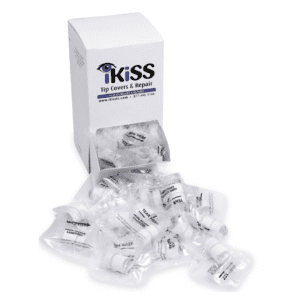
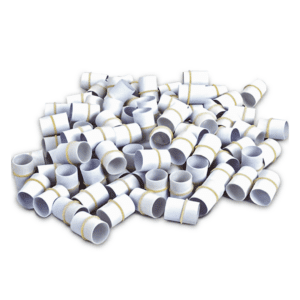
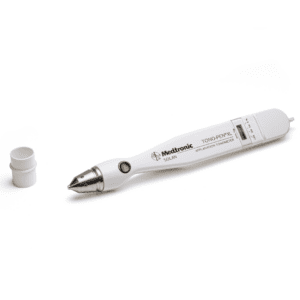
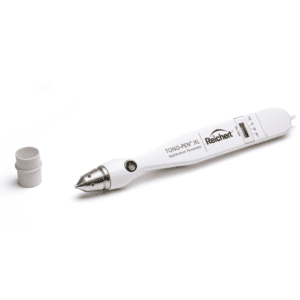
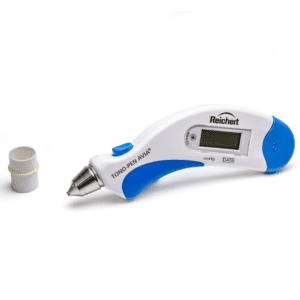
iKiSS is the go-to provider for top-quality refurbished Tono-Pen® Tonometers, Tono-Pen AVIA® Tonometers, Slit Lamps, and Phoropters, offering substantial savings of up to 40%.